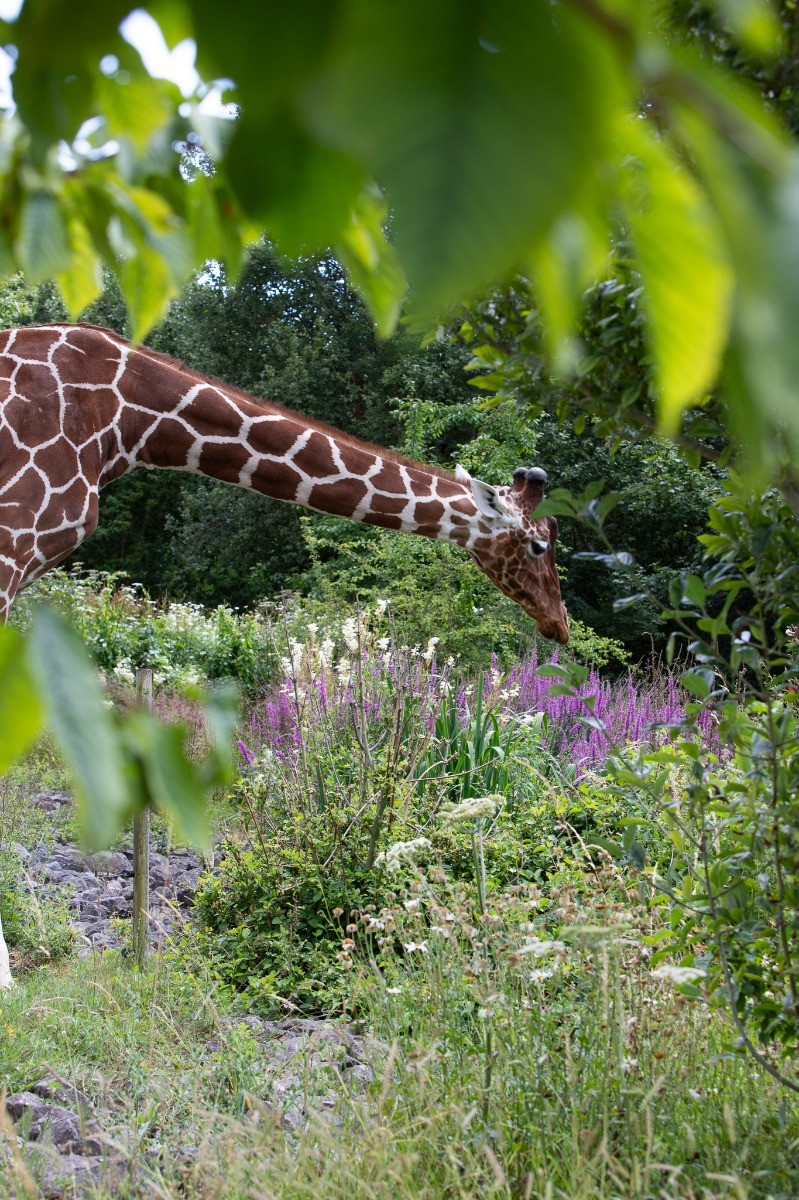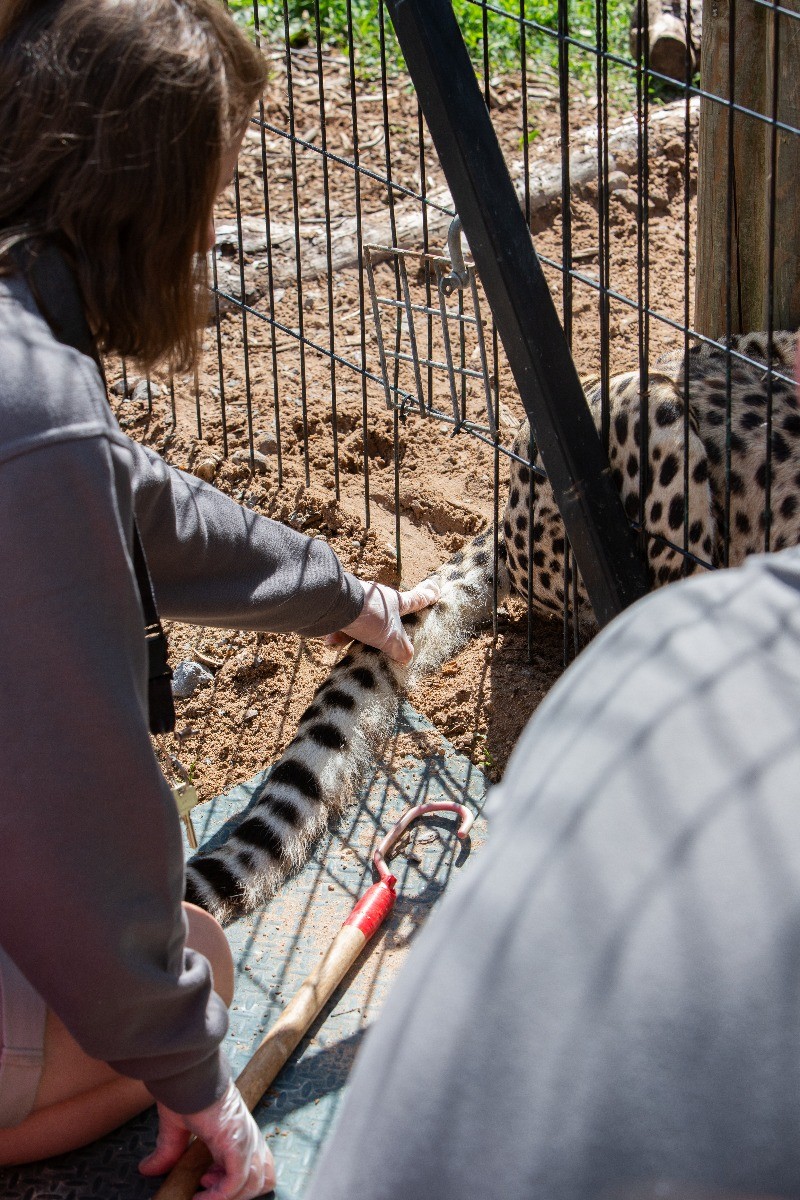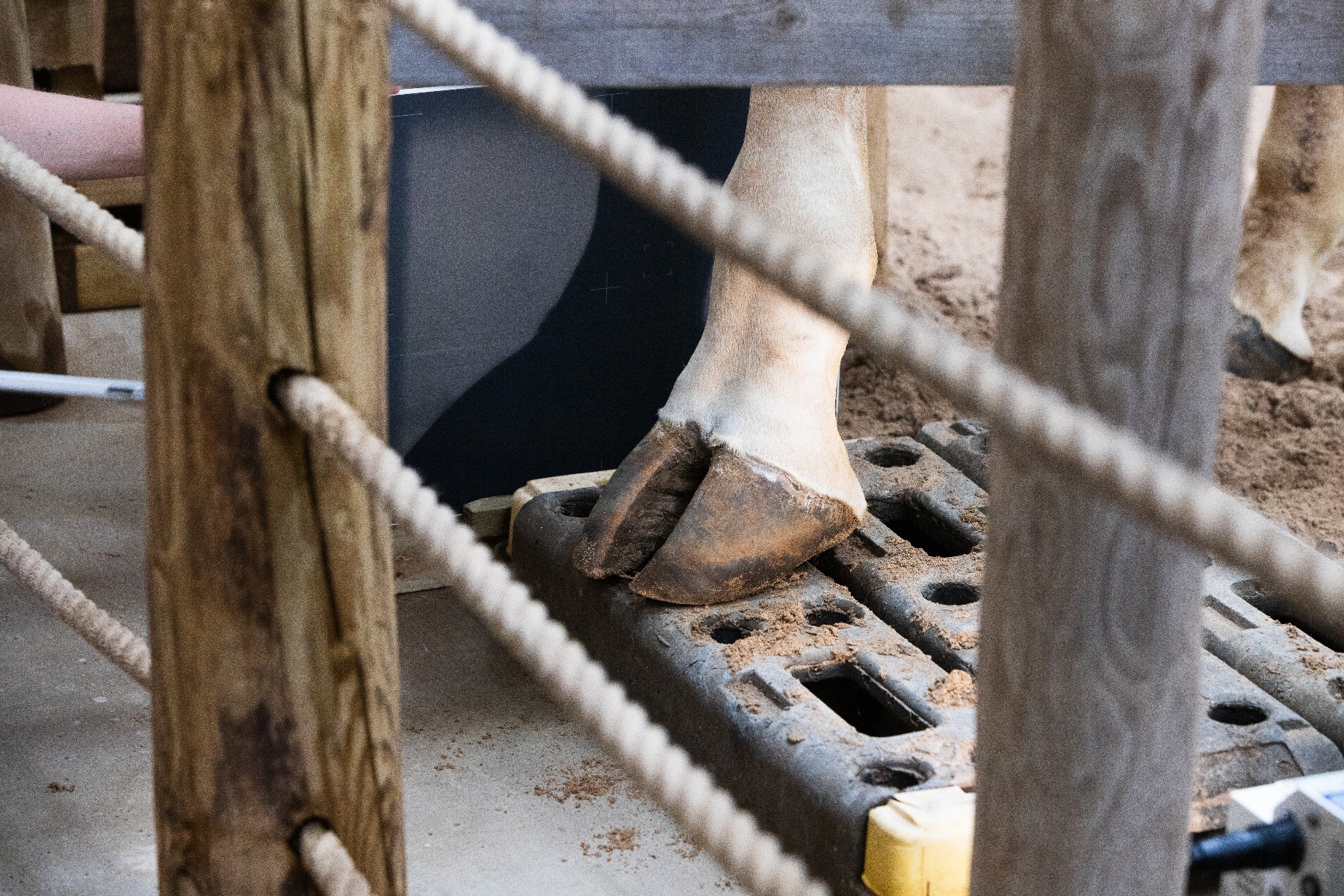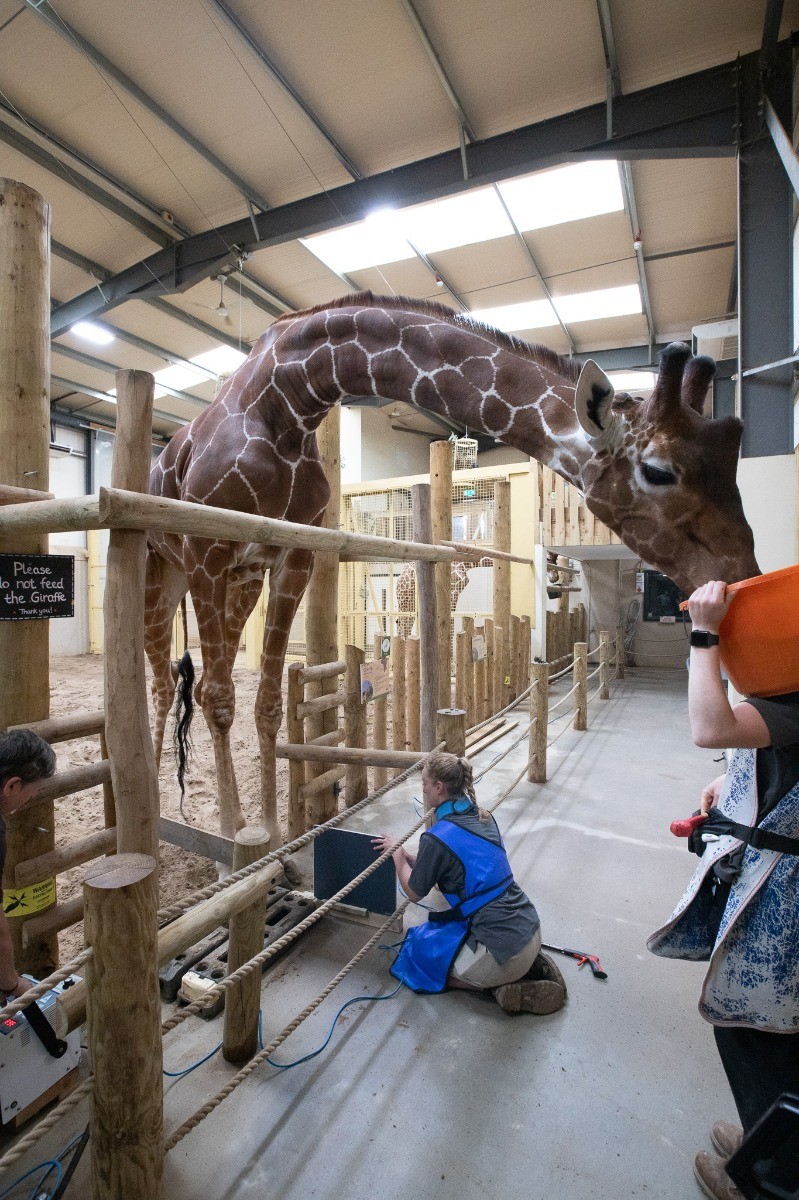An opportunity for us to see Burton's equipment in action is always a special one. Observing not just its impact on a patient's care and diagnosis, but also how it can ease the job of vet nurses and vets too. With our portable radiography systems, we are accustomed to seeing x-rays of dogs, cats, and even horses. But when we were invited to observe a giraffe willingly offering its leg for an x-ray with one of our DR systems, we knew it was an opportunity not to be missed.
 Bristol Zoo Project
Bristol Zoo Project
Bristol Zoo Project is owned and run by the conservation and education charity Bristol Zoological Society. It’s home to
animals from around the world including giraffes, cheetahs, zebras, deer, ostrich, gelada baboons and lemurs, and includes the award-winning Bear Wood exhibit, which is home to brown bears, lynxes, wolverines, and wolves. The Society’s 136-acre site, formerly known as Wild Place Project, has recently become the Bristol Zoo Project, which aims to redefine what zoos should look like in the 21st century.
It will focus on creating a new kind of natural landscape for the conservation zoo. Not only will 80% of the zoo’s species be linked to the Society’s conservation work, but the animals' living spaces will also closely reflect their natural habitats.
However, behind these incredible natural habitats that visitors see, a whole different project is in progress. Through the dedication of the veterinary team and keepers, animals have been trained to accept specific examinations and checks without needing sedation.
Animal Training
The gorillas and many other primates at the zoo have been trained for veterinary procedures for many years. For example, Jock, the western lowland silverback gorilla, happily accepts his COVID and Flu jabs whilst being distracted with peanut butter.
The keepers and vet team knew that the cheetah training was a huge project for them. If they could achieve this with one of the wariest species that they had, could they achieve this with even more of the animals they care for?
The two male cheetahs are very closely bonded and appearhealthy. However, the vets wanted to ensure their kidneys were
functioning normally since they are now 13 years old, and cats often develop kidney issues with age. To avoid anaesthesia, the vet team and keepers decided to test an alternative way to monitor the cheetah’s health.
So, by using food, they trained the cheetahs into a fenced-off area adjacent to their living space, where they would learn to lie down to get their treat. A small hole was cut into the fence to allow the keeper to gently pull the cheetah’s tail through whilst it was distracted. This allows the vet team to collect blood samples and take accurate blood pressure readings.
get their treat. A small hole was cut into the fence to allow the keeper to gently pull the cheetah’s tail through whilst it was distracted. This allows the vet team to collect blood samples and take accurate blood pressure readings.
This reduces the stress for the animals, whilst allowing the veterinary team to be incredibly proactive with their care, watching for any change of vitals.
The Cheetah project was a huge success, and since this breakthrough, many of the species have been trained in certain
ways to improve their care. The beautiful European brown bears will happily walk onto the scales and have their paws and claws checked whilst distracted by watered-down honey. The Red River hogs allow infrared light therapy for their
arthritis. The list doesn’t stop there.
Teresa Horspool (VN) said: “The trick is to always make it a positive experience for the animals, they are wild animals, and this is how we want them to stay. This means being accepting that some days it doesn’t go to plan, or some days they just don’t want to. Our keepers are so in tune with the animals they care for that they can generally tell this as soon as we get started. But if it doesn’t go to plan, that’s ok. The animals still get their treat. We never want to leave them feeling like they have had a negative experience. The next day we may try again. If we are getting the readings we need, without stressing the animals out, it doesn’t matter how many attempts it takes. It’s far better than stressing them out unnecessarily.

Giraffe x-rays
Dayo the Giraffe had developed abnormal hoof conformation with his digits wider apart than normal and his toes pointing inwards. This led to the vet team needing to do regular X-rays of his hoof to keep an eye on it. The giraffes had already started clicker training, where if they touch their nose to the end of the small clicker stick, they will receive a piece of carrot or sweet potato. This enabled the keepers to guide them in certain directions when they needed to.
The internal section of their habitat has been adapted to allow for a cutout section of fence where the giraffe can safely get closer to the vet team. This extended section has blocks on the floor for the giraffes to place their hoof on when instructed. They know that if they do this, they get more rewards, reinforcing the behaviour.
We were warned before we got there that Dayo the giraffe can be temperamental, sometimes deciding that today is not a good day for him. But luckily for us, Dayo was having a great day. Offering out his foot as soon as the x-ray system was in sight.
 DR Radiography System
DR Radiography System
Bristol Zoo Vet Project have a mobile Examion Wi-Fi panel with a laptop system. This enables the vet nurses to take the x-ray, check it live on the screen within seconds, and re-take it if necessary. This allows the VN’s to get all the possible angles and correct positioning in one straightforward session and means that Dayo the giraffe can receive his treats and walk away back to his herd with minimal stress for him, and for all the staff involved. This also provides the vet team with precise, high-quality images for accurate check-ups and future diagnosis.
Vet Nurse Teresa, loves the ease of the system. She said: “We have taken x-rays of Dayo on our CR system, but we had to capture the x-ray, take the cassette back to the vet room at the other end of the site, place it in the reader and view it on the screen there. That was that. If the x-ray positioning wasn’t quite right, or the image wasn’t clear enough, that was us done for that day. Dayo had already had his treats. That training session was over. When our head vet asked for clearer images, the obvious answer was to use our portable DR machine. Being able to see the x-ray as you are taking it saves so much time and stress for the animal, the keepers can quickly ask him, by using simple commands, to reposition his leg by using a tempting bit of sweet potato, and you have all the high-quality images you need.”
The zoo has started to adapt internal animal houses so that the DR panel can be used across a variety of species. The goat’s habitat has already been adapted and they will now happily walk into a fenced area with the DR panel behind them so that they can be x-rayed.
The dedication and patience of the team at Bristol Zoo Project means the absolute best care for their animals, with less intervention needed. And the latest equipment, like the Examion DR portable cases, will continue to assist in making these dream scenarios a reality.
DR equipment has revolutionized in-depth examinations that require radiography. Today, animals of all shapes and sizes can receive the most thorough examinations and the best veterinary care without being sedated.
Moreover, DR technology offers clear and precise images quickly, allowing veterinarians to make quick and accurate diagnoses. This minimizes the time needed to diagnose and treat patients, resulting in better outcomes for the animal.


